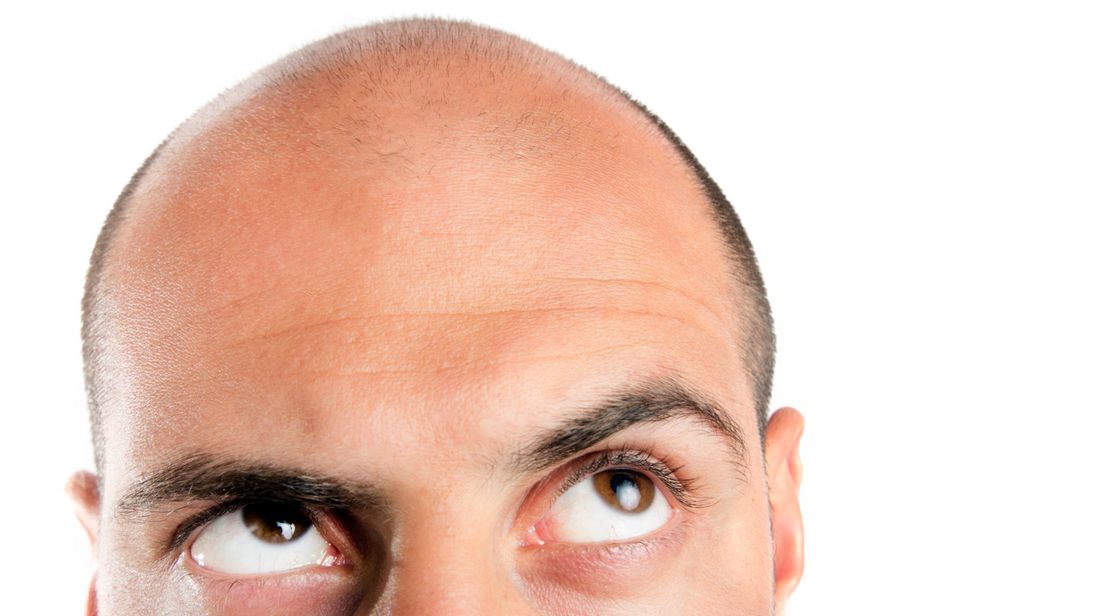
One of the first things many people do in their daily morning routine is glance in the mirror hoping the reflection peering back resembles a human. For those sprouting a healthy mop of hair, this can take quite a while depending on the state of the mop and whether or not a comb can manage the ensuing tumbleweed or if a chainsaw is needed. This desire to fix our appearance and look presentable stems from the inherent need to attract mates of a similar or greater status. In fact, studies have shown that women are more attracted to men with a full head of hair as it is historically related to virility. However, since the nature of evolution focuses more on whether a trait affects fertility and ability to reproduce, baldness takes a back seat in the hierarchy of passed down through genetic advantages. Once a species reproduces nature doesn’t have a part to play, making male pattern baldness difficult to predict and even more of a priority for those fighting the seemingly hopeless balding battle. Male pattern baldness can start as early as the late teens and usually begins with the receding hairline and thinning on top of the scalp. Female pattern baldness rarely results in total hair loss and typically starts in the middle of the back of the head. So if nature does in fact take a back seat what exactly causes premature hair loss? Well, there are actually a few factors that affect the outcome of one’s head and whether or not the shiny scalp will emerge prematurely or if it remains a hairy secret well into the later years.
The type of hair loss that is passed down to individuals through genetics is known as androgenetic alopecia, more commonly known as male/female pattern baldness. Male pattern baldness occurs in men whose hair follicles are sensitive to the hormone dihydrotestosterone, or DHT. Over time, DHT-sensitive hair (usually found on the top and front of the head) becomes weaker, finer, and eventually stops growing. However, even men who experience advanced hair loss typically have healthy hair follicles around the sides of the head. Even though these healthy hairs are exposed to DHT, they are resistant to this hormone and survive for a lifetime. Hairs last about two to three years on our head, then fall out and get replaced with new ones in a months-long cycle. When a hair falls out and isn't replaced — or gets replaced with a much thinner hair — then we start to go bald.
There has long been a myth that baldness hails from the maternal lineage because one of the genes that triggers this condition is passed down on the X chromosome. This chromosome is called the AR gene which codes for the androgen receptor protein. Among other functions, this protein helps hair follicle cells detect androgen hormones (like testosterone) that circulate through the body. Androgen. hormone. Androgen, any of a group of hormones that primarily influence the growth and development of the male reproductive system. The predominant and most active androgen is testosterone, which is produced by the male testes. Testosterone and other androgens can affect when, and where, and how much a person’s hair grows. Recent studies report that MPB is a polygenic condition, meaning there are many genetic variants involved. In fact, many of the genetic variants associated with MPB are not located on sex chromosomes. When considered together, these variants have been found to be more predictive of MPB development than variants that are located on sex chromosomes. The reason why the maternal lineage idea is a myth is simply because of all these other factors that come into play, the X chromosome is hardly the only indicator of baldness. New research shows that other chromosomes affect hair loss. There are 11 other genetic sequences of varying importance identified so far, located on chromosomes 1, 2, 3, 5, 7, 12, 17, 18, and 20. You inherited these chromosomes from both your mother and father, who inherited them from their mothers and fathers.
There are genes in basically all chromosomes that have been implicated in androgenetic alopecia, and this is what makes it so difficult to unravel, as we would have to examine the overall contribution that each gene variant (single nucleotide polymorphism, or SNP) play in hair loss, and also how these genes interact with each other and the environment to result in the phenotype. Regardless of your sensitivity to DHT, you will likely experience hair loss over time. It’s part of aging. Look at the odds: 90 percent of 90-year olds have experienced significant loss. However, you can slow down the fall-out rate, and not just with Propecia, Rogaine, and transplants.